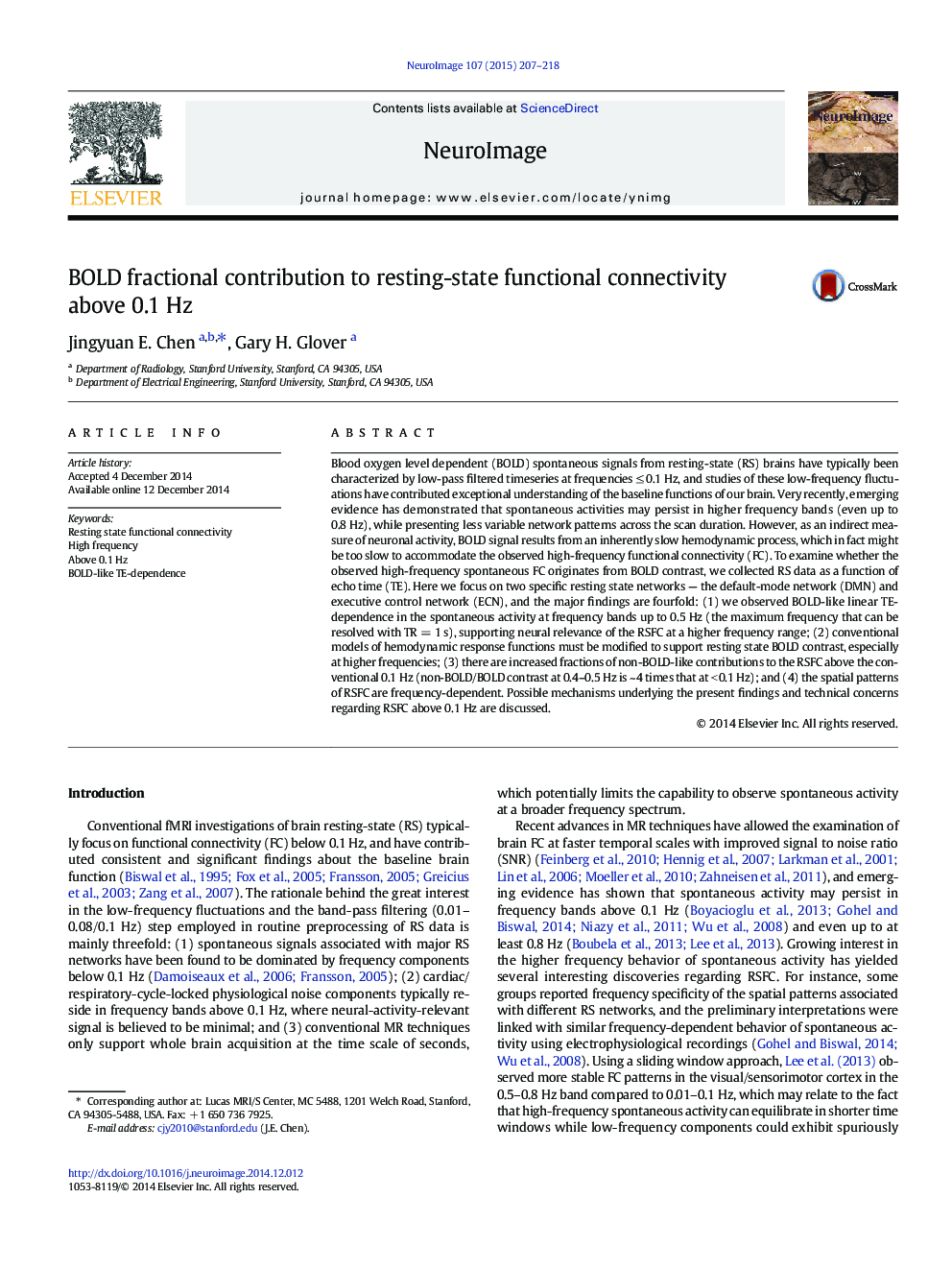| کد مقاله | کد نشریه | سال انتشار | مقاله انگلیسی | نسخه تمام متن |
|---|---|---|---|---|
| 6026181 | 1580900 | 2015 | 12 صفحه PDF | دانلود رایگان |

- Resting-state functional connectivity (RSFC) persists above 0.1Â Hz.
- We observe BOLD-like linear TE-dependence in spontaneous activity up to 0.5Â Hz.
- Increased fractions of non-BOLD-like signal contributions to RSFC above 0.1Â Hz
- HRF models at task conditions must be modified at rest.
- Spatial patterns of RSFC are frequency-dependent.
Blood oxygen level dependent (BOLD) spontaneous signals from resting-state (RS) brains have typically been characterized by low-pass filtered timeseries at frequencies â¤Â 0.1 Hz, and studies of these low-frequency fluctuations have contributed exceptional understanding of the baseline functions of our brain. Very recently, emerging evidence has demonstrated that spontaneous activities may persist in higher frequency bands (even up to 0.8 Hz), while presenting less variable network patterns across the scan duration. However, as an indirect measure of neuronal activity, BOLD signal results from an inherently slow hemodynamic process, which in fact might be too slow to accommodate the observed high-frequency functional connectivity (FC). To examine whether the observed high-frequency spontaneous FC originates from BOLD contrast, we collected RS data as a function of echo time (TE). Here we focus on two specific resting state networks - the default-mode network (DMN) and executive control network (ECN), and the major findings are fourfold: (1) we observed BOLD-like linear TE-dependence in the spontaneous activity at frequency bands up to 0.5 Hz (the maximum frequency that can be resolved with TR = 1 s), supporting neural relevance of the RSFC at a higher frequency range; (2) conventional models of hemodynamic response functions must be modified to support resting state BOLD contrast, especially at higher frequencies; (3) there are increased fractions of non-BOLD-like contributions to the RSFC above the conventional 0.1 Hz (non-BOLD/BOLD contrast at 0.4-0.5 Hz is ~ 4 times that at < 0.1 Hz); and (4) the spatial patterns of RSFC are frequency-dependent. Possible mechanisms underlying the present findings and technical concerns regarding RSFC above 0.1 Hz are discussed.
Journal: NeuroImage - Volume 107, 15 February 2015, Pages 207-218